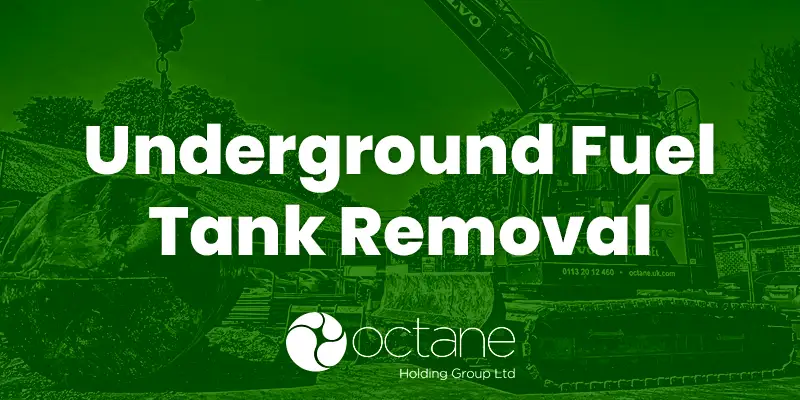Latest News
Keep up to date with latest news and insights from Octane Holdings

Underground Fuel Tank Removal From Refuelling Stations
Underground Fuel Tank Removal: Steps for Safe Decommissioning
Old refuelling stations can be attractive investments for commercial property developers. When managed properly, they can provide profitable returns.
However, it’s crucial to understand the processes involved, particularly underground fuel tank removal and decommissioning, to ensure safety and compliance.
What is Underground Fuel Tank Removal and Decommissioning?
Underground fuel tank removal and decommissioning involves safely closing and removing tanks, pipes, and associated equipment posing health or safety risks.
This process ensures that all hazardous substances are contained, removed, or neutralised according to environmental and safety regulations.
Key Steps for Underground Fuel Tank Decommissioning
1. Conduct a Full Risk Assessment
Assess environmental factors, tank status, project timeline, costs, manpower, and impacts on local businesses, residents, and the surrounding environment.
2. Test Soil and Water for Contamination
Collect samples of soil and water before, during, and after tank removal. Seek advice from specialist consultants like Octane.
3. Remove Residual Substances (Bottoming)
Drain and clean remaining liquids in tanks and pipes. Dispose of all substances at approved waste or treatment facilities.
4. Neutralise Harmful Gases
Remove explosive or toxic gases using inert gases or water. Dispose of any contaminated water safely.
5. Dismantle Tanks, Pipes, and Equipment
Carefully remove all underground infrastructure and ensure disposal through a licensed recycling or waste management partner.
6. Control Surface Water
Prevent puddles, rainwater, or condensation from entering the excavation site. Contaminated water requires hazardous waste treatment.
Why Specialist Support is Essential
The process of decommissioning old fuel stations is long, complex, and high risk. Professional expertise ensures compliance with environmental and safety regulations.
You must assess each former refuelling station, survey tanks, confirm their status, and test surrounding soil and groundwater for contamination.
A specialist company can safely remove all apparatus, handle hazardous substances, and complete testing without risking legal or environmental issues.
Conclusion
Purchasing a refuelling station for redevelopment can be profitable, but strict procedures are vital for worker and resident safety.
Professional support ensures that tank removal, decommissioning, and site remediation are completed efficiently, safely, and in compliance with regulations.
For expert assistance with underground fuel tank removal or refuelling site decommissioning, contact Octane here or today on 0113 2012 460.

